Before even hopping on a motorcycle, it’s a smart decision to ride about the mechanics of the machine and familiarize yourself with key concepts. Having an idea in your head is going to come in handy when you’re faced with common beginner problems or later on when you’re on the road.
That’s how you really get a handle on the motorcycle. Let’s get started.
Motorcycle Basic Controls
Most motorcycles have the same controls; but you should always check the owner’s manual since the locations and shapes of some features will vary between makes and models.
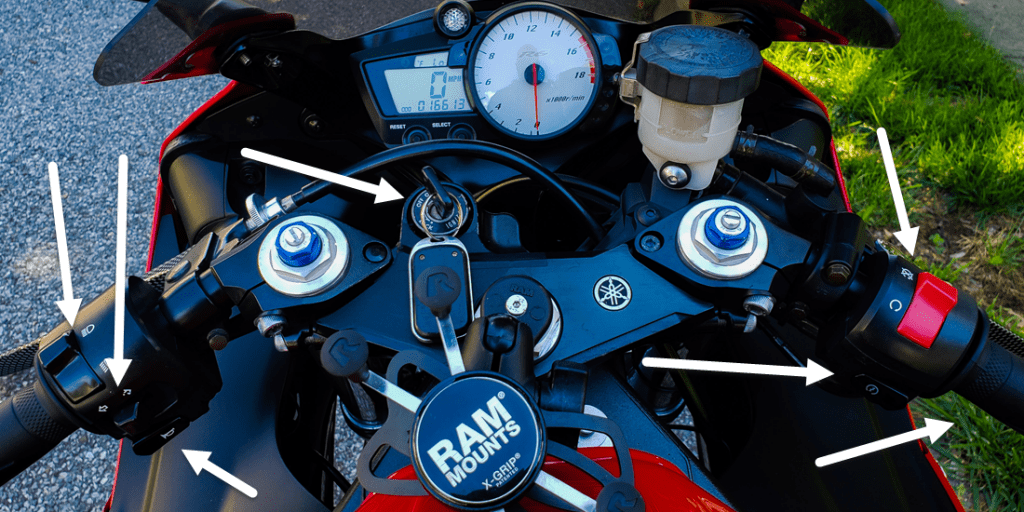
Motorcycle basic parts:
Handlebars
Right side:
- Electric start button – usually yellow or white.
- Engine cut-off switch – above the electric start button. Usually red.
- Above the right throttle is the front brake lever.
Left side:
- Horn
- Indicators (blinkers)
- Choke
- Headlight dip switch (high beams/low)
- Clutch lever.
Between the handlebars, you find the ignition key. Ahead of the handlebars, you will also see the speedometer, odometer, and the tachometer.
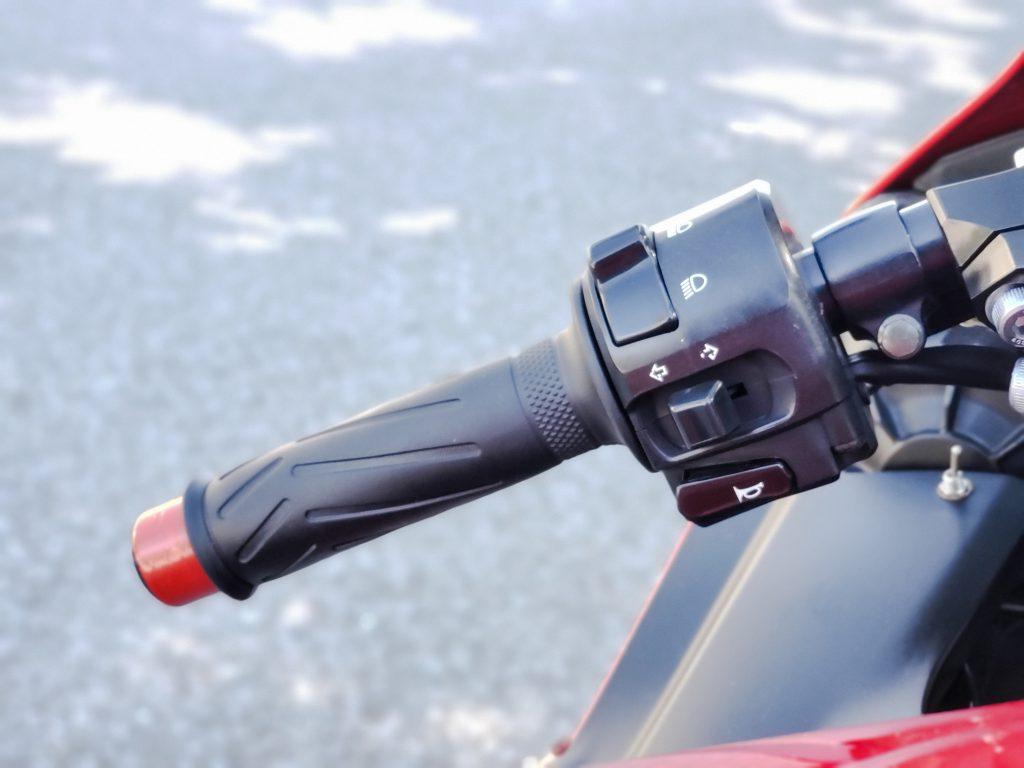
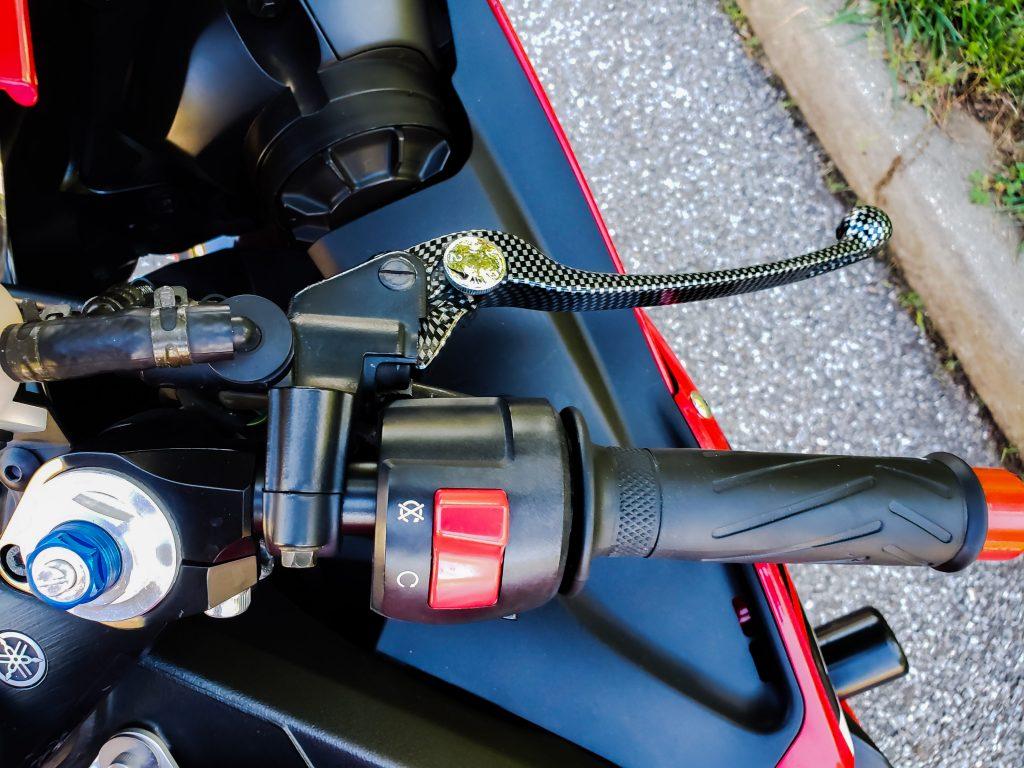
Older Styles and Off-Road Bikes
Here’s some special considerations if you are on an older model or have an off-road bike:
Fuel petcock – these are usually attached to the left near the carburetor. You can lean down to switch the gas tank when the fuel is getting low and you need to get to the gas station ASAP.
Kick starter – off-road bikes have kick starters more commonly than street bikes. The kick starter works when you push down on the lever, turning the engine crank and causing the pistons to put pressure against the spark plug. Fuel ignites to start the engine.
What To Check Before Your Ride Every Time
Professional schools throughout the country use the acronym T-CLOCs to help you remember what you should check before heading on your bike. These checks should be done at least once a year, depending on how often you are riding your bike. If you ride every single day, you will have to use T-CLOCs much more often.
- T – Tires
- C – (Main) Controls
- L – Lights & other controls
- O – Oil & other fluids
- C – Chassis
- S – Stands
Tires
Check the air pressure and look at the condition of the tires. Are they worn down? Cracking? What is the condition of the spokes? Do you note any air leakage?
Next, look at the rims, bearings, seals, and casts. Does each brake work as it should? Does the bike fight you when turning or slowing down?
Controls
The main controls include the handlebars, cables, hoses, levels, pedals, and throttle. Make sure the condition of the hoses is good and that everything is properly lubricated. The bars should be straight, and the throttle should move without resistance. Ensure the hoses aren’t cut or leaking. Any bulges, chafing, cracks or fraying of control cables needs to be repaired.
Lights & Other Controls
This includes the battery, wiring, tail and signal lights, switches, blinkers, headlight, and reflectors. Is everything illuminating? Do the blinkers flash right? Is fraying or kinks in the wiring? Are the beams strong enough in the dark?
Oil & Other Fluids
Check the gaskets and seals for any leaks. Ensure the oil level is good, along with other fluid levels. Check for sediment in the coolant reservoir.
Chassis
The chassis is made up of the frame, suspension, chains, belts, and fasteners. Nothing should rattle. Nothing should be frayed, cracking, peeling, or chipping. Ensure that everything is tight and that there is tension in the belts and chains.
Stands
Check for cracks or bends in the stands. Springs should hold their position without looseness.

Basic Mechanics of a Motorcycle
Being that a motorcycle rides on two wheels, it is designed to lean to either side. Through balance and input from the ride, the motorcycle maintains an upright position. Many beginners are afraid that the bike is going to fall over if they lean too far, but that’s not the case. Through the forces of physics, such as friction, momentum, and gravity, it’s nearly impossible for a bike that’s going to straight to fall over.
Engine
Another reason the motorcycle stays upright is the force of the pistons in the engine. These pistons move up and down, creating a force that helps the moving bike maintain it’s upward position.
Tires
The tires of motorcycles are designed to be rounded, ensuring that as the bike rounds a corner, the same surface area of the tire remains on the ground.
Chassis
For the beginner, all you need to know about the chassis is how to sit properly. When positioned properly on the bike, your wrists, knees, and back will be comfortable. You should also be able to engage your core and thigh muscles when using your body to maneuver.
Clutch
Most bikes are manual transmission. The clutch keeps the bike moving but also controls the speed by using friction. Clutches are usually bathed in the same oiled the engine uses, so if you ride the clutch for a while, you won’t cause damage. However, some bikes are different, so refer to the owner’s manual.
Wrapping It Up
For the new rider, your focus should be memorizing where the controls are and what certain parts of the bike do. By learning the general location, you can drive much more safely (and not while staring at the handlebars).
Remember, the everything takes practice. In the same way you learned to ride a bicycle, you need some patience with riding a motorcycle. With that, you’re ready to begin!
Liked this article? Want more beginner’s tips? Subscribe to my YouTube channel to get notifications about the latest videos and never miss out.
You Might also like
-
The Best Stretching Exercises for Sportbike Riders
Riding a sportbike can be an exhilarating experience, offering a sense of freedom and excitement. However, it can also be demanding on the body, particularly on the muscles and joints used most during rides. To ensure both safety and enjoyment while riding, incorporating stretching exercises into your routine is essential. Below, we outline the best stretching exercises specifically designed for sportbike riders, aiming to enhance flexibility, reduce muscle stiffness, and prevent injury.
Key Takeaways
- Stretching improves flexibility and range of motion, essential for comfortable and safe riding.
- Regular stretching can prevent muscle stiffness and soreness, particularly in areas heavily used during rides such as the wrists, shoulders, and legs.
- Incorporating exercise stretch bands can enhance stretching routines, offering resistance that can help improve overall flexibility.
Comparison Table: Stretching vs. No Stretching for Sportbike Riders
Criteria With Stretching Without Stretching Flexibility Improved Decreased Muscle Soreness Reduced Increased Injury Risk Lowered Elevated Riding Comfort Enhanced Compromised Recovery Time Shortened Lengthened Why Stretching is Crucial for Motorcycle Riders
Before delving into the specific exercises, it’s important to understand why stretching is so beneficial for motorcycle riders. Stretching can improve range of motion, decrease the risk of muscle soreness and injuries, and enhance your overall riding experience by keeping the body flexible and prepared for the demands of riding.
Best Stretches for Motorcycle Riding
- Wrist Extensor and Flexor Stretches
- Purpose: Alleviates wrist stiffness and prevents arm pump.
- How to Do: Extend your arm, palm down, and gently pull the fingers towards your body with the other hand. For the flexor stretch, extend your arm, palm up, and pull the fingers towards your body.
- Shoulder and Chest Openers
- Purpose: Opens the chest and shoulders, counteracting the forward-leaning posture.
- How to Do: Interlace your fingers behind your back, straighten your arms, and lift your chest upwards, feeling the stretch in your shoulders and chest.
- Hip Flexor Lunges
- Purpose: Loosens the hip flexors, crucial for maintaining a comfortable riding position.
- How to Do: Step forward into a lunge, keeping the back leg straight and the front leg at a 90-degree angle. Push your hips forward.
- Quadriceps Stretch
- Purpose: Stretches the front thigh muscles, which can become tight from the riding position.
- How to Do: Standing on one leg, pull the other foot towards your buttock, keeping the knees together.
- Seated Hamstring Stretch
- Purpose: Increases flexibility in the back of the legs.
- How to Do: Sit on the ground, extend your legs, and reach towards your toes.
- Glute and Piriformis Stretch
- Purpose: Relieves tightness in the buttocks and lower back.
- How to Do: Sitting on the floor, cross one leg over the other and gently pull the knee towards the opposite shoulder.
Incorporating Stretch Bands for Enhanced Flexibility
Exercise stretch bands can be a valuable tool for motorcycle riders looking to enhance their stretching routine. They provide resistance, increase the effectiveness of stretches, and help improve overall flexibility. Here are a couple of stretches using exercise bands:
- Band-Assisted Hamstring Stretch: Lie on your back, loop a band around your foot, and gently pull back, keeping the leg straight.
- Shoulder Stretch with Band: Hold a stretch band in both hands, lift your arms over your head and behind your back, stretching the shoulders.
FAQs on Stretching for Motorcycle Riding
- How often should I stretch?
- Ideally, before and after each ride to warm up and cool down the muscles.
- Can stretching improve my riding performance?
- Yes, by enhancing flexibility and reducing muscle fatigue.
- Are there stretches to prevent lower back pain from riding?
- Yes, hip flexor stretches and lower back stretches can help alleviate and prevent lower back pain.
- Why is stretching important for motorcycle riders? S
- tretching improves flexibility and reduces the risk of muscle stiffness and injuries, making riding more comfortable and enjoyable.
- How often should I stretch for the best results?
- Ideally, before and after each ride to prepare your muscles for the ride and to aid in recovery afterwards.
- Can stretching help with lower back pain from riding?
- Yes, specific stretches targeting the lower back and hip flexors can alleviate and prevent lower back pain.
- Are exercise stretch bands beneficial for riders?
- Yes, they add resistance to stretches, effectively improving flexibility and strength in key muscle groups.
- What are the best stretches for sportbike riders?
- Wrist, shoulder, hip flexor, quadriceps, hamstring, and glute stretches are highly beneficial.
- How long should each stretch be held?
- Each stretch should be held for at least 30 seconds to maximize its effectiveness.
Conclusion
Incorporating these stretching exercises into your routine can significantly enhance your motorcycle riding experience. Not only do they prepare your body for the ride, but they also help prevent post-ride stiffness and soreness. Remember, consistency is key to seeing improvements in flexibility and to enjoy a more comfortable and enjoyable ride.
For more tips on fitness and motorcycle riding, check out our Fitness Blog at RunTheCity. Whether you’re a seasoned rider or just starting, understanding and practicing these stretches can lead to a healthier, more enjoyable riding experience.
-
My First Motovlog
Hi Everyone! This is my first motovlog! I’m riding a 2004 Yamaha YZF-R6. Don’t forget to subscribe and comment!!
Read More -
Viking Cycle Bloodaxe Leather Motorcycle Jacket Review
When it comes to motorcycle jackets, you want something that balances the need to look like you own the road and enough protection to keep you from becoming part of the road. Viking Cycle, a brand based out of California, has been turning heads with their attention to detail and security in their full range of motorcycle clothing for men and women. The best part is the price tag.
“As an Amazon Associate I earn from qualifying purchases.”Overview of the Bloodaxe Motorcycle Jacket
Out of the box, the Bloodaxe looks awesome and feels awesome. When the jacket first goes on, you’ll notice it’s a bit stiff—but it does loosen up with some wear, as good leather should. The zippers have solid construction, open and close smoothly, and lay well when you’re riding.
The biggest advantage of the Viking Cycle Bloodaxe isn’t the awesome name but the amount of storage. You won’t believe the amount of storage space you have with this jacket. There’s so much, it’s almost ridiculous.
There is a headphone wire system that you can feed into the collar of the jacket, earphone pockets, a media player pocket, cellphone pocket with 3 second access, 2 knife and pen pockets, an eyeglass pocket, a pocket designed to find a 10-inch tablet, extendable keyholder, and another pocket that can fit travel documents and your wallet. The pockets have a unique “no bulge” design, so even if you somehow managed to stuff every single compartment this jacket has, it will still look flat and sleek and not like a bubble jacket. Overall, it sits nice on the body and doesn’t feel stifling.
The sizing does run a little small. Someone around 5 foot, 10 inches, 180 pounds will fall into the M-L range, depending on how much you want to bundle up. If you take out the thermal lining or don’t want to wear a lot of clothing underneath, you might want to size down to prevent the jacket from floating on you.
“As an Amazon Associate I earn from qualifying purchases.”No products found.
No products found.
Specifications
(listed adapted from vikingcycle.com)
- Construction – Drum-dyed soft genuine cowhide leather (milled buffalo), padded shoulders, and Viking cycle level 1 removable “armor” on elbows and spine; two intake vents on the top of the shoulders and exhaust vents in the back
- External Storage – 2 zippered chest pockets, 2 zippered side pockets, and a single sleeve pocket
- Internal Storage – 2 secured zippered pockets and a secret compartment
- Adjustability – waist snaps and sleeve zippers
- Visibility – High viz stripes located on the back and shoulders
Pros
- Sag and wrinkle resistant
- Wind and water resistant
- Abrasion resistant
- A ton of hidden pockets on the internal side of the jacket
- CE marked armor in the back and shoulders – comfortable and stays in place while riding around
- Budget-friendly cost without a lack of quality and safety
- Stylish design
Cons
- Can be hot – the jacket has a thermal lining and is heavy, so it can be oppressive in the summertime even with the vents open. For that reason, it might not be ideal for moving in slower paced traffic;
- CE armor level could be higher.
Warranty Info
Viking Cycle offers a 1 year manufacturer’s warranty on all of their products. This means that any defects or imperfections that you find are covered. The warranty does not cover wear and tear or damages caused from improper care.
This might raise some questions about durability, since some production errors or faults can take a few days or weeks to appear.
If you start to notice something odd going on with the jacket that you didn’t cause, you can contact Viking Cycle at info@vikingcycle.com with the order number and a photo of the defect to get an exchange or refund.
No products found.
Conclusion
Honestly, for the quality of the jacket, you would expect to pay more for it than you do. The name might be a bit for metal than what this motorcycle jacket offers, but the sleekness of the design, paired with the sound construction and unheard of amount of storage makes it a clear winner. If you’re looking for a balance of style and safety without breaking your bank, I recommend the Viking Bloodaxe motorcycle jacket for your wardrobe.
Looking for more details about choosing motorcycle jackets and other riding gear? Then check out and subscribe to my YouTube channel today!
No products found.
No products found.


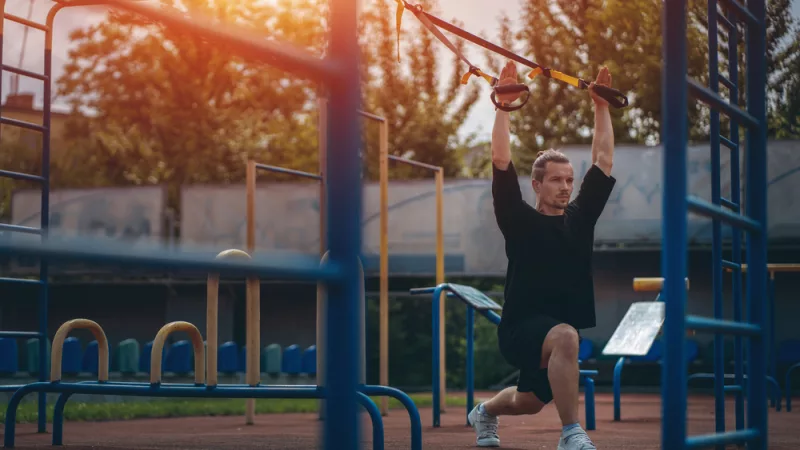
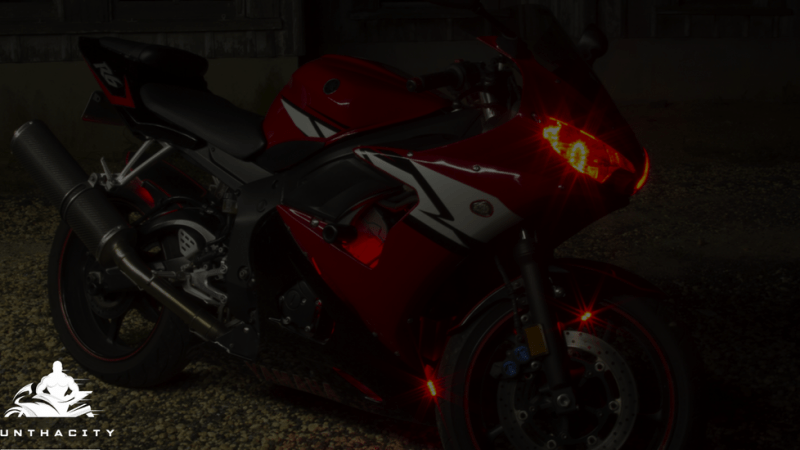

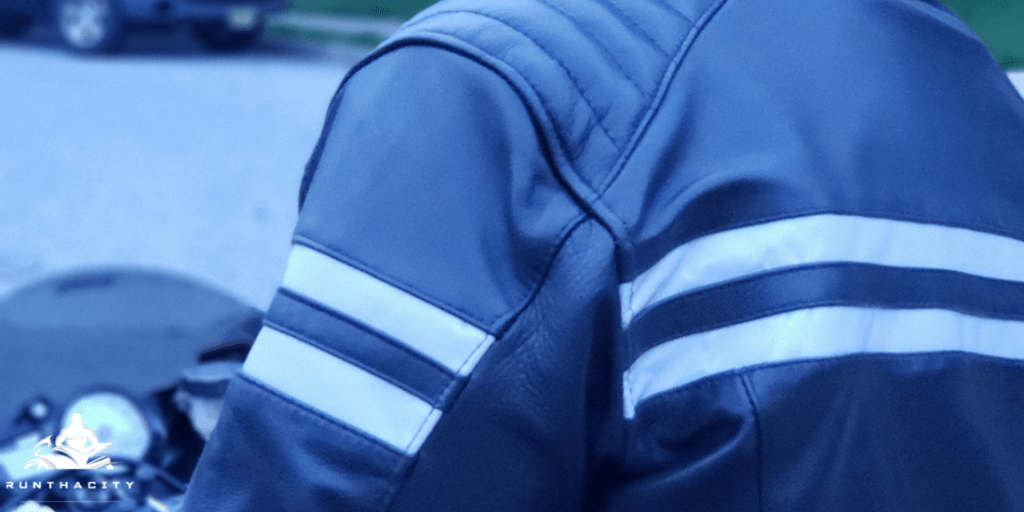





2 comments on Motorcycle Basics: Before You Start Riding